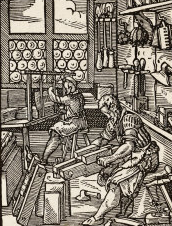De l’incongru comme symptôme dans Blind Man with a Pistol de Chester Himes
Abstract
If, in the Harlem described by Chester Himes in his Domestic Novels, "anything can happen", how can the incongruous, an event contrary to custom, still arise? Can we still see the incongruous as a punctual irruption of disorder when the fictional world is itself chaotic?
And yet, in Blind Man with a Pistol, the reader regularly stumbles across elements that catch him off-guard, and whose irruption suspends his reading, either for a laugh or a bewildered gasp: a man whose throat is slit by "Jesus", a convent in search of fertile women, a pacifist demonstration that ends in an all-out fight.
Published at the end of the '60s, against a backdrop of racial riots and demonstrations, violent repression and systemic racism, the novel describes the heterogeneous piling up of bodies and lives, multiplies narrative and typographical breaks, and makes violence both the only possible solution to the "black problem" and what makes it worse.
The incongruous sabotages any coherent representation of life in Harlem, contributing to the figuration of a pathological universe. It shatters any attempt to make sense of the world, but leaves a glimmer of hope by preventing the story from coming to a close.
Downloads
Published
Issue
Section
License
- Work submitted for publication must be original, previously unpublished, and not under consideration for publication elsewhere. If previously published figures, tables, or parts of text are to be included, the copyright-holder's permission must have been obtained prior to submission.
- Authors of accepted manuscripts will assign to L'Atelier the right to electronically distribute their article, or publish it in any form (Internet, CD ROM, printed copy) but authors will retain copyright and, after the article has appeared in L'Atelier, authors may republish their text (in print and/or electronic form) as long as they clearly acknowledge L'Atelier as the original publisher.


